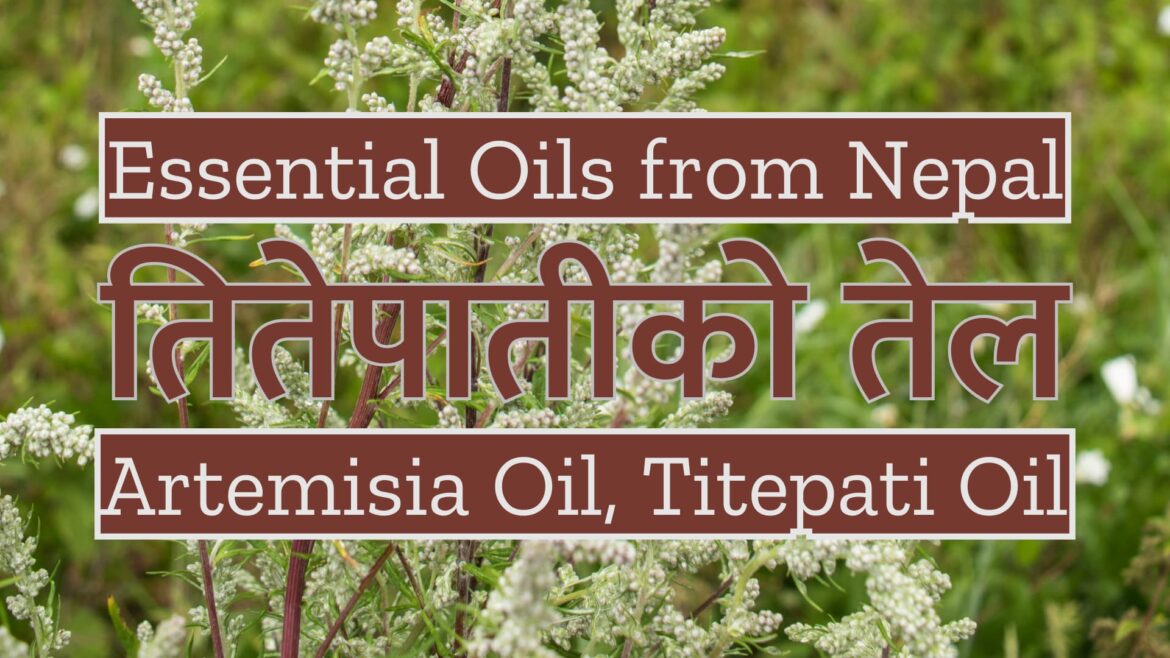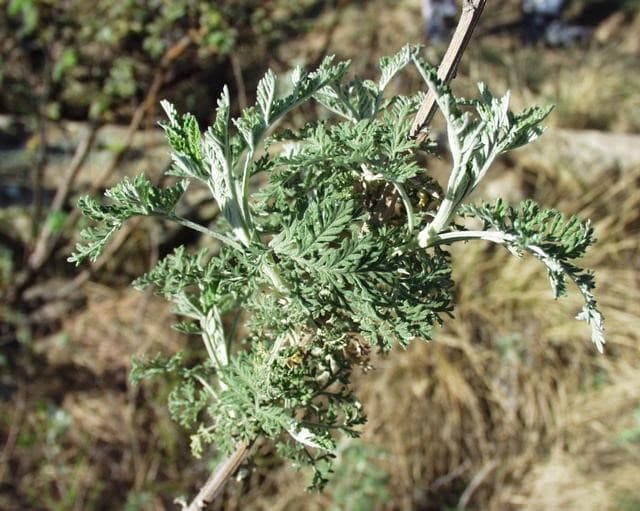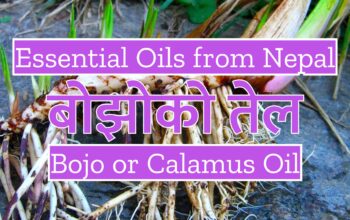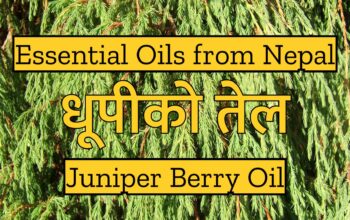- English
- नेपाली
Artemisia Oil | Titepati Oil
Botanical name: Artemisia indica Willd.
Family: Compositae
Description of the plant:
There are 11 species of Artemisia plants in Nepal. Artemisia grows on roadsides and in the open fields of forest. Different species of Artemisia have been found from the Terai in the South (150 m) to the high altitudes of the Northern Himalayas (4,360 m). Artemisia is found throughout the year in the form of botany (fuzzy gray weeds) and grows up to 2m. tall. It blooms in the month of Asar (June-July) and bears fruit in Asoj (September-October). Artemisia plant is quite fragrant.
Processing Method:
0.2 to 1.79 percent of essential oil has been found in Artemisia. The percentage of oil depends on the species of Artemisia, the time of collection, the geographical source and the moisture content of the raw material being processed. After processing dried Artemisia (A. indica species) (100 kg) by Steam Distillation for about 4 to 5 hours, about 150 ml. to 200 ml. of Artemisia oil can be produced (0.15-0.2%).
Properties of Himalayan Fir Oil:
Artemisia Oil (A. indica) is pale yellow or greenish-yellow in color. The smell of oil is described as fresh, camphor-like (camphoraceous), somewhat green and bitter sweet with a cedar leaf like top note. Among the chemicals found in Artemisia oil, Thujone is the major one. Thujone is a toxic chemical. Therefore, Artemisia oil with low Thujone content is considered good.
Uses:
Artemisia Oil is used to make soap, cologne, detergent, lotion, and perfume. This oil is included in the medicine used to massage the outer part of the body.
It is also used to add fragrant to the following food items (The amount used is given in parentheses).
– in non-alcoholic beverages (14ppm)
– in alcoholic beverages (11ppm)
– in ice cream (0.50-22ppm)
– in candy (9.0ppm)
– in baked goods (2.0ppm).
तितेपातीको तेल
वानस्पतिक नामः आर्टेमिसिया इन्डिका
वानस्पतिक परिवारः कम्पोजिटी
बिरुवाको वर्णन:
नेपालमा ११ वटा प्रजाति (species)का तितेपातीको बोट पाइन्छ । बाटोको छेउछाउमा र फाँडिएको जङ्गलको खुला मैदानमा तितेपाती उम्रिन्छ । दक्षिणको समतल तराई क्षेत्र (१५० मि.) देखि उत्तर हिमाली क्षत्रे को (४,३६० मि.) उचाइसम्म भिन्न प्रजातिका तितेपाती भेटिएको छ । वर्षैभरि बोटबुट्यान (फुस्रो खरानी रङ्कको झारपात) का रूपमा पाइने तितेपाती २ मि. सम्म अग्लो हुन्छ । यो असार महिनामा फुल्दछ । फल असोजमा फल्दछ । तितेपातीको बोट सुगन्धित हुन्छ ।
प्रशोधन विधिः
तितेपातीमा ०.२ देखि १.७९ प्रतिशत सुगन्धित तेल पाइएको छ । तेलको प्रतिशत तितेपातीको प्रजाति, सङ्कलनको समय, भौगोलिक स्रोत र प्रशोधन गरिने कच्चा पदार्थमा रहेको पानीको मात्रा (moisture content) मा निर्भर पर्दछ । ओइलिएको तितेपाती (A. indica प्रजाति) (१०० कि.ग्रा.) लाई ४ देखि ५ घन्टा स्टीम डिस्टिलेसन (steam distillation) प्रक्रियाद्वारा प्रशोधन गरेपछि करिब १५० मि. लि. देखि २०० मि. लि. (०.१५-०.२%) सम्म तेल उत्पादन गर्न सकिन्छ ।
गोब्रेसल्लाको तेलका गुणहरू:
A. indica प्रजातिको तितेपातीको तेल फिका पहेंलो वा हरियो – पहेंलो रङको हुन्छ । तेलको गन्ध fresh, कपुरको जस्तो (camphoraceous), somewhat green and bitter sweet with a cedar leaf like top note भनी वर्णन गरिएको छ । तेलमा पाइने रसायनहरूमध्ये थुजोन (thujone) प्रमुख रहेको छ । थुजोन विषालु रसायन हो । त्यसैले यो रसायन कम भएको तितेपातीको तेल राम्रो मानिन्छ ।
उपयोगिताः
तितेपातीको तले साबनु , कोलोन (cologne), डिटरजेन्ट, लोसन र अत्तरलाई सगुन्धित बनाउन प्रयागे गरिन्छ । निम्न खाद्य वस्तुहरूलाई सुवासित (Fragrant) गर्न पनि तेल प्रयोग गरिन्छ । प्रयोग गरिने मात्रा कोष्ठमा दिइएको छ — अमादक पेय पदार्थमा (14ppm), मादक पेय पदार्थमा (11ppm), आइसक्रिममा (0.50-22ppm), क्यान्डीमा (9.0ppm) , baked goods मा (2.0ppm)। शरीरको बाहिरी भागमा मालिस गरिने औषधिमा यो तेल समावेश गरिन्छ ।










